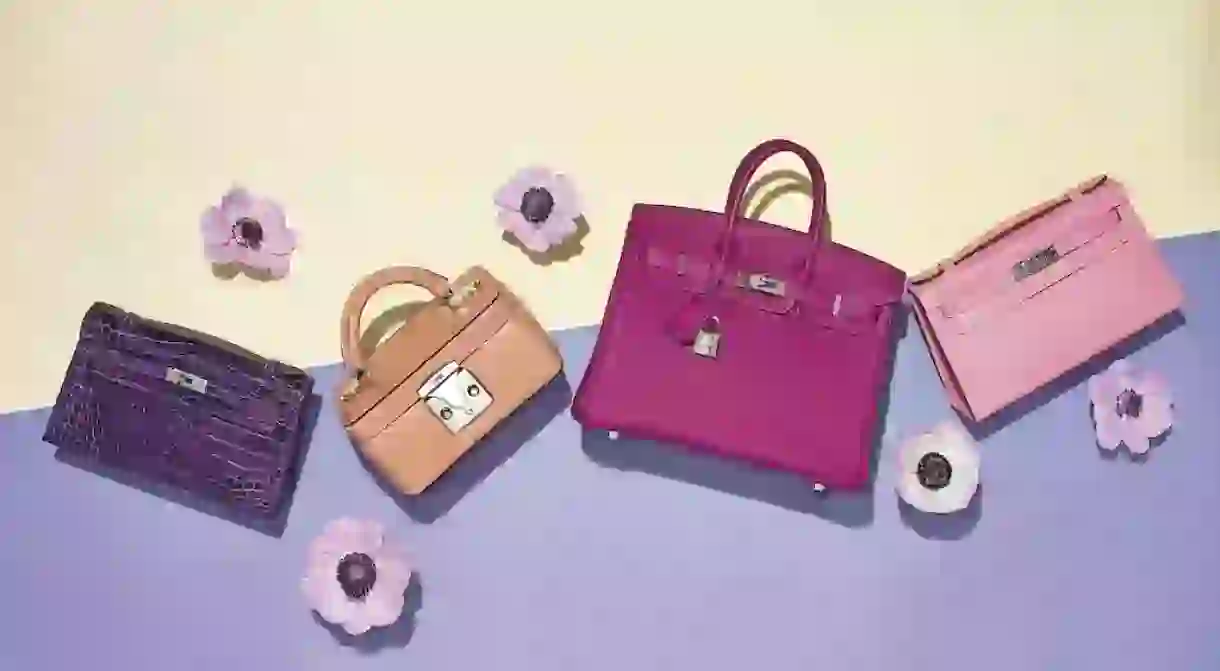How Handbags are Changing the Collecting Game, According to Christie’s

With multi-million-dollar price tags separating everyday art connoisseurs from those coveted masterpieces on the auction block, a new generation of collectors—particularly women—are looking to handbags.
Amid a technicolor spectrum of clutches, satchels, and totes at the Christie’s showroom in Rockefeller Center, Caitlin Donovan, Handbags specialist and Head of Sales at Christie’s New York, explains that handbags are essentially “wearable works of art.” Donovan helms one of Christie’s fastest-growing auction categories, not to mention the only female-centric collecting department.

“We’re the only department in which women [constitute] the majority of buyers,” Donovan tells Culture Trip. “Obviously many women collect art, watches, wine, rare books, etc., but often times their [male] partners actually do the buying. In our department, women take care of the transactions and build their own collections. We’re also younger, so we’re a great gateway to the collecting world.”
As it stands, Christie’s Handbags & Accessories department caters primarily to women between 30 and 40 years of age. And unlike the fine art departments, which typically negotiate through dealers, Donovan and her team work directly with private clients across Asia, Europe, and the United States.

With pieces that open for bidding at three figures and average out at four to five, handbags are an ideal segue into collecting for beginners. Plus, Donovan adds, “live auctions can be really intimidating.” Since most handbag sales take place online, the low-pressure anonymity of e-commerce makes for an easy introduction. After all, she continues, “buying handbags online is something that a lot of women are familiar with.”
While a percentage of Christie’s handbag clients are also seasoned art collectors, the Handbags & Accessories department is forging a new generation of buyers. “Handbags are emerging as a proper aspect of the collecting asset class,” Donovan notes, “which changes the shopping game for women.” As one of the first auction houses to integrate handbags into the accessories department in 2014, the cultivation of a rapidly expanding and ever-strengthening market has created lucrative potential for long-term investment, not to mention a breadth of collecting opportunities for women with luxury tastes but without the funds for their very own Basquiat.

Among the 200-plus handbags offered in Christie’s biannual New York Luxury Sales, the priciest highlights included a trio of 2010 Chanel “Matryoshka” evening bags (realized for $32,500, $27,500, and $27,500, respectively), and a 2011 limited edition “So Black” Hermès handbag, sold for $21,250. In London, a “Himalaya Niloticus” crocodile Hermès Birkin bag with 18k white gold and diamond hardware fetched £162,500. These are higher-end examples of the “one-of-a-kind pieces that even top collectors come to Christie’s to buy because they can’t get them in the stores,” Donovan explains. For Christie’s clients who are also serious art collectors, four-to-five-figure price tags are comparatively affordable, and classic handbags kept in pristine condition are reliable investments.
“About 80 percent of what we sell in the department is Hermès, because Hermès has a robust secondary market,” Donovan informs. “It’s even stronger than the primary. Pieces sell for more at auction than they do in the store.” As a result, some of Christie’s top clients—we’re talking “women who are buying Picassos”—have gotten into buying and selling handbags after recognizing the profits they can turn from their recently-purchased, lightly-worn, and vintage accessories.

“We of course don’t want to be exclusive,” Donovan notes, so she has overseen the addition of trunks, travel pieces, and homewares to the Handbags & Accessories department—pieces that appeal to both men and women. But in a vastly male-dominated market, the rise of the handbag enforces the timelessness of this classic accessory, and beckons a new era of independent female collectors with autonomy over their personal acquisitions.
“The kinds of handbags that we’re marketing are ones that aren’t trendy,” Donovan concludes. “They’re iconic pieces of art.”













